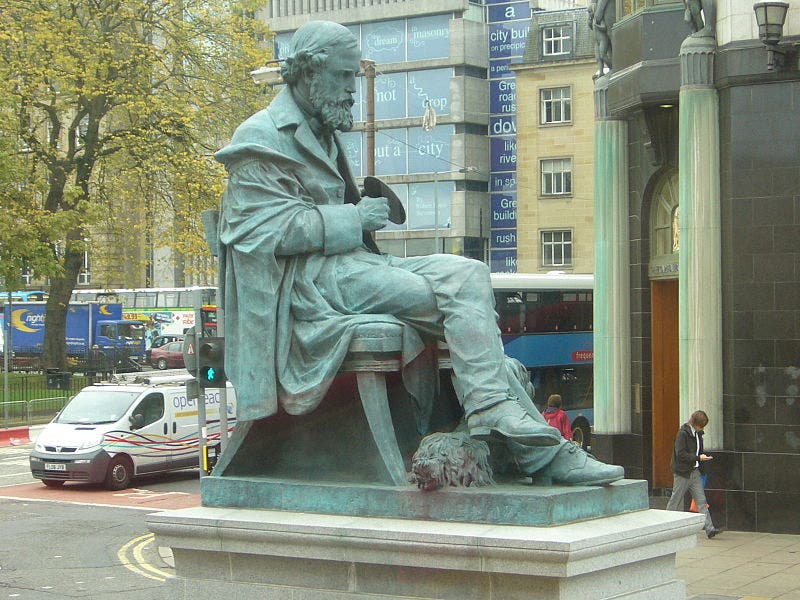Scientist of the Day - James Clerk Maxwell
James Clerk Maxwell, a Scottish physicist, was born June 13, 1831. Maxwell is not nearly so well known to the general public as Isaac Newton or Albert Einstein, yet he is consistently ranked with those two when scientists generate lists of "the world's greatest physicists". Einstein himself had three portraits in his own study – of Newton, Faraday, and Maxwell – and he claimed that Maxwell was the most profound physicist since Newton (modestly omitting himself).
Maxwell united the fields of electricity and magnetism, much in the way that Newton synthesized the various sciences of terrestrial and planetary motion. Maxwell constructed a set of equations that covered every case in which electric currents and changing magnetic fields generate other electric and magnetic fields; eventually these were boiled down to four. Many physicists have called these the most beautiful equations in the history of science. We see them in bronze in our first image. The man who put Maxwell’s equations into the four-fold vector form we see on the plaque was Oliver Heaviside, who did so in 1884 and was our Scientist of the Day (for quite different reasons) on May 18, 2018. Maxwell also predicted the existence of electromagnetic waves that propagate at the speed of light, and he surmised, correctly, that light would turn out to be an electromagnetic wave as well. And Maxwell gave us “Maxwell’s Demon,” a “finite entity” that might able to subvert the second law of thermodynamics by separating fast and slow molecules without expending any energy itself, a seeming paradox that has given physicists fits ever since. His work on electromagnetism appeared in the milestone work, A Treatise on Electricity and Magnetism (1873), a two-volume work that we have in our History of Science Collection.
Earlier, building on the work of James David Forbes, Maxwell also constructed one of the first “color wheels,” which, when spun, allowed the eye to mix colors to form new ones. He was the first to use red, blue, and green filters to produce separate black-and-white photographic negatives. When red, blue, and green light was projected through translucent prints of these negatives, a full-color image was produced. A black-and-white photograph of Maxwell, taken in 1855, shows him holding his color wheel (third image). Thanks to his work, eventually photographs like this would be taken in color.
Maxwell died, much too young, of an apparently hereditary abdominal cancer, for his mother had died, at the very same young age, of the same cancer. They were both 48 years old when they passed away. They are buried in a typically modest but beautiful gravesite in Parton, Scotland, which in many ways evokes the elegant simplicity of his equations (fourth image).
In 2008, a bronze sculpture of Maxwell was unveiled in Edinburgh. It was designed and executed by Alexander Stoddart. We see above (second image) one side of the statue as it now stands, and another view (fifth image) of the other side of finished statue in the Black Isle Bronze foundry at Nairn, Scotland. Maxwell is depicted at age 48; he holds a version of his color wheel, and his dog Toby sits at his feet. The bronze depiction of Maxwell’s equations in our first image is embedded in the pavement near the statue; a smaller version is on the back of the statue’s pedestal. Dr. William B. Ashworth, Jr., Consultant for the History of Science, Linda Hall Library and Associate Professor, Department of History, University of Missouri-Kansas City. Comments or corrections are welcome; please direct to ashworthw@umkc.edu.










